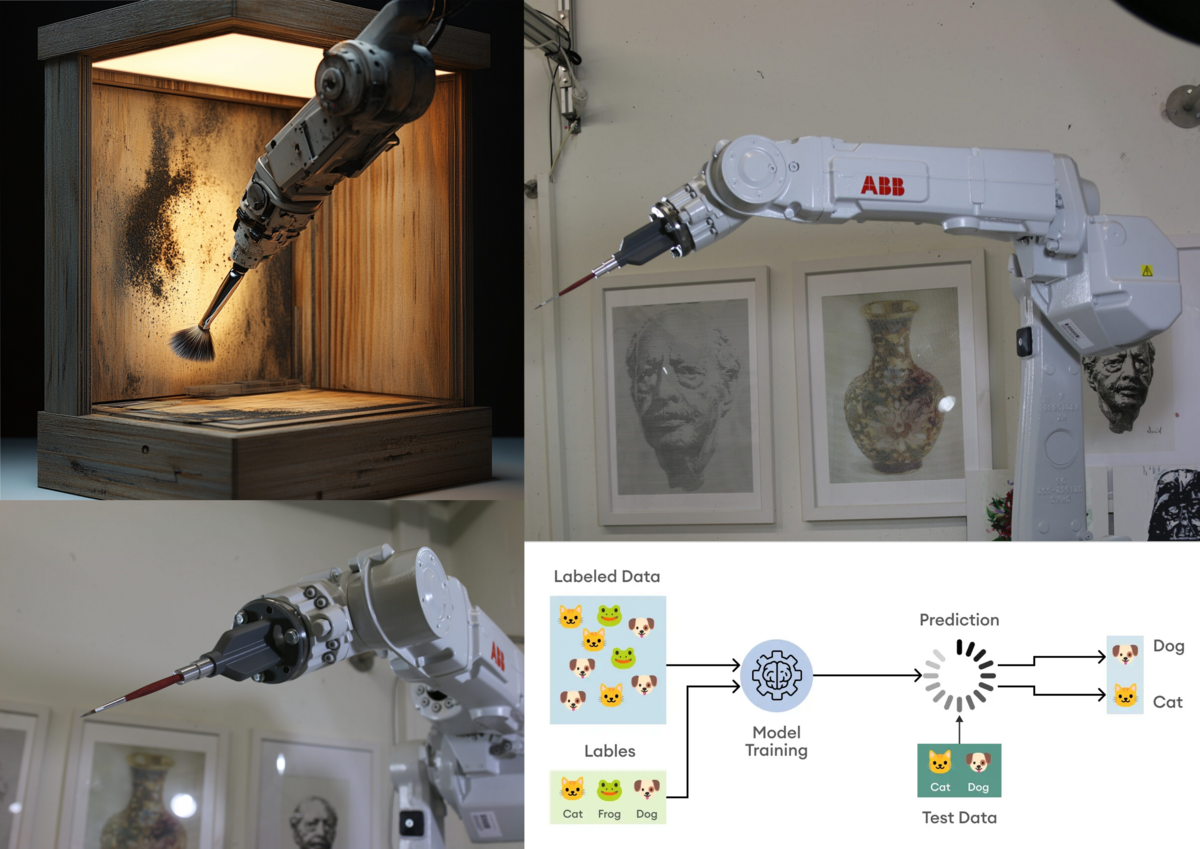Machine Learning-Based Brush Analysis System for Defect Detection in Robotic Painting

Project Overview:
This project focuses on developing an automatic brush analysis system that uses machine learning to detect defects in painting brushes for a robotic painting system. Brushes can become deformed, worn, or dirty throughout a painting project, leading to suboptimal painting performance. To address such physical problems that can occur, the Student will design an enclosed system that integrates hardware and software to monitor brush conditions in real-time, ensuring the robot maintains peak performance. The solution involves using either vision (2D) or LiDAR (3D) imaging inside an illuminated box to inspect brushes and classify when they require cleaning or replacement.
Hardware Design:
The hardware component will center around an illuminated inspection box equipped with a vision system or a LiDAR-based scanner, depending on the dimensionality of the analysis. The illuminated environment will ensure consistent lighting for capturing detailed images or point clouds of the brushes. The design will be focused on capturing high-resolution data on the brush's bristle alignment, wear, and potential dirt accumulation. The box will be seamlessly integrated into the robotic painting system's workflow, allowing brushes to be inspected at regular intervals, either automatically or manually triggered.
Machine Learning and Defect Detection:
The software stack will be powered by a machine-learning model capable of analyzing the captured data and detecting various defects. This will involve training a classifier on a healthy versus defective brush dataset, using features such as bristle deformation, paint buildup, and overall brush shape. The model will predict when a brush will likely affect the painting quality, either due to damage or accumulated dirt, and will signal the need for cleaning or replacement. The system's decision-making process will be based on the brush's current condition and its expected performance in subsequent painting tasks.
2D Vision and 3D LiDAR Approaches:
The project will explore both 2D and 3D imaging approaches. The 2D vision system will use high-resolution cameras to analyze brush bristles from multiple angles, identifying surface-level defects such as paint buildup or visible damage. The 3D LiDAR-based approach, on the other hand, will provide detailed point clouds of the brush's structure, allowing for more sophisticated defect detection, particularly in detecting changes in the bristle's shape and alignment. The choice between these methods will depend on the project's needs, balancing between system complexity and defect detection accuracy.
Integration and Real-Time Feedback:
The system will be fully integrated into the E-David robotic painting environment, with the analysis process occurring in real-time or at scheduled intervals. Brushes will be fed into the illuminated box for inspection, after which the machine-learning system will analyze the data and provide feedback to the robot. If a defect or dirt accumulation is detected, the system will issue a command to clean or swap out the brush. This real-time feedback mechanism will prevent suboptimal painting performance and ensure that the robotic painting system operates consistently without constant human observation.
Expected Outcomes:
The project's outcome will be a functional brush analysis system capable of autonomously inspecting brushes and detecting defects in real-time. The system will solve a critical problem in robotic painting by maintaining brush quality throughout long painting sessions, reducing the risk of performance degradation due to faulty brushes. This project will offer valuable contributions to the field of robotic art and industrial automation by improving reliability and reducing manual oversight. Additionally, it will demonstrate how machine learning and imaging technologies can be used to monitor and maintain equipment in artistic and creative robotic applications.
Requirements:
General interest in image processing, machine-learning
Basic knowledge of Python programming, image processing
Interest in working with hardware and sensors
If you are interested, please contact Michael Stroh.
